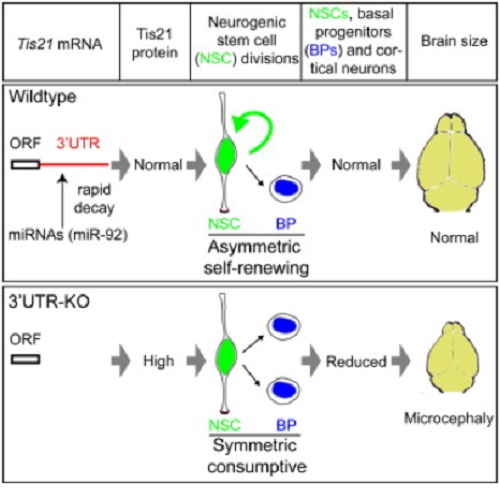3' UTR-dependent, miR-92-mediated restriction of Tis21 expression maintains asymmetric neural stem cell division to ensure proper neocortex size.
Mammalian neocortex size primarily reflects the number and mode of divisions of neural stem and progenitor cells. Cortical stem cells (apical progenitors) switching from symmetric divisions, which expand their population, to asymmetric divisions, which generate downstream neuronal progenitors (basal progenitors), start expressing Tis21, a so-called antiproliferative/prodifferentiative gene. Tis21 encodes a small (17.5 kDa), functionally poorly characterized protein and a relatively large (2 kb), highly conserved 3' UTR. Here, we show that mice lacking the Tis21 3' UTR develop a microcephalic neocortex with fewer neurons, notably in the upper layers. This reflects a progressive decrease in basal progenitors, which in turn is due to a fraction of apical progenitors prematurely switching from asymmetric self-renewing to symmetric self-consuming divisions. This switch is caused by the markedly increased Tis21 protein level resulting from lack of microRNA-, notably miR-92-, dependent restriction of Tis21 expression. Our data show that a premature onset of consumptive neural stem cell divisions can lead to microcephaly.

- Cell Rep 2014 Apr 24;7(2):398-411
- 2014
- Neurobiology
- 24726360
- PubMed
Enabled by:
